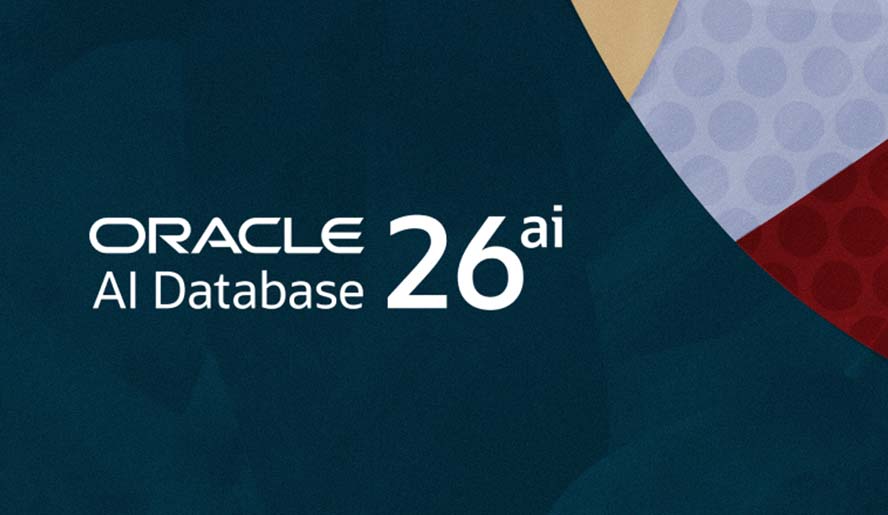
LAS VEGAS—Oracle has introduced a next-generation, AI-native version of its flagship database, Oracle AI Database 26ai. The long-term support release is a pillar of Oracle’s broader “AI for Data” strategy, which aims to help customers deliver trusted AI insights and productivity gains using all their data across the entire enterprise—including both operational systems and analytic data lakes. With AI Database 26ai, leading AI models can work with enterprise data in a way that’s truly simple and intuitive.
“The key to thriving in the age of AI is to...deliver breakthrough insights, innovations, and productivity before your competitors do,” said Juan Loaiza, Oracle’s EVP of database technologies, from the keynote stage at Oracle AI World. “In this monumental release, Oracle has architected AI and data together to create a next-generation, AI-native database.”
Oracle AI Database 26ai integrates AI across all major data types and workloads, including AI vector search, and further integrates AI into functions such as database management, data development, application development, and analytics. The release also supports the Apache Iceberg open table format, Model Context Protocol, industry-leading LLMs, popular agentic AI frameworks, and Open Neural Network Exchange embedding models.
“Our goal for Oracle’s AI for Data strategy is to use open standards so our enterprise customers have freedom of choice when building and deploying AI applications,” Loaiza said.
Oracle AI Database 26ai is a long-term support release that replaces Oracle Database 23ai. Customers can simply apply the October 2025 release update to transition from release 23ai to release 26ai, no database upgrade or application recertification required. Advanced AI features, including Oracle AI Vector Search and many more, are included at no additional charge, and a free tier is available.
“This is still your full-featured, mission-critical Oracle Database that brings AI to data securely, efficiently, and reliably wherever it resides,” Loaiza said, whether that’s in Oracle Cloud, other leading hyperscale clouds, a private cloud, or on-premises.
The result is a mission-critical enterprise database that offers native vector search, autonomous AI lakehouse functionality, natural language data analytics, and AI for enterprise application developers.
Unified Hybrid AI Vector Search
“In this monumental release, Oracle has architected AI and data together to create a next-generation, AI-native database.”
Oracle AI Database 26ai helps organizations achieve greater insights across all their enterprise data. Unlike a specialized vector database, Oracle AI Database’s native AI Vector Search, combines with relational, text, JSON, knowledge graph, and spatial searches, to allow for faster and simpler retrieval of related documents, images, videos, audio, and structured data. Customers can easily combine AI Vector Search with LLMs to securely search for private data that an LLM can combine with public data to answer business questions.
Native vector search in Oracle AI Database 26ai delivers quick answers to complex questions “in a way that has never before been possible,” Loaiza said.
Enterprisewide AI and analytics
Loaiza addressed organizations looking to harness the scalability and flexibility of a modern data lake while also leveraging Oracle’s advanced AI, fast analytics, and enterprise-grade performance.
The Oracle Autonomous AI Lakehouse service combines the power of Oracle AI Database with the freedom of an Apache Iceberg data lake. It lets customers run the industry’s most comprehensive AI and analytic SQL on all Iceberg data, with Oracle Exadata–powered performance and pay-per-use serverless scaling.
Autonomous AI Lakehouse is available on all four major hyperscale clouds—Oracle Cloud Infrastructure, Amazon Web Services, Google Cloud, and Microsoft Azure—and provides interoperability with Iceberg tables, such as Databricks and Snowflake . With Autonomous AI Lakehouse, customers can leverage their existing investments and gain the benefits of AI.
Organizations currently running Autonomous Data Warehouse 23ai will see their instances automatically convert to Autonomous AI Lakehouse 26ai, enabling all the new AI lakehouse features, said Loaiza.
“It handles both advanced relational and graph and JSON, on the same Iceberg data,” he said. “And you get Exadata performance.”
AI for enterprise app development
Oracle AI Database 26ai’s advanced features accelerate the benefits of AI for developers while helping to mitigate its risks. These features include new data annotations, natural language interfaces for enterprise developers, and several ways to build, deploy, and manage AI agents.
Data annotations, for example, help explain the purpose, characteristics, and semantics of data to AI. This additional information helps AI generate better applications and provide more accurate responses to natural language questions. It’s akin to SQL tuning in past iterations of the database.
In addition, AI Private Agent Factory, one of several AI agent creation and management tools in Oracle AI Database 26ai, provides a no-code AI agent builder and deployment framework. It runs as a container in the environment of the customer’s choosing. These development operations also benefit from Oracle AI Database’s unified data model, which brings together vector, relational, JSON, and graph data models to simplify AI initiatives.
-
Read the Oracle AI Database 26ai technical blog post
Dig into the details of the latest long-term release of Oracle’s flagship database.
-
AI in Action: 11 Use Cases to Spark Your Strategy
Ready to use LLMs, AI agents, and advanced machine learning to automate workflows, win customers, and make people more productive?
